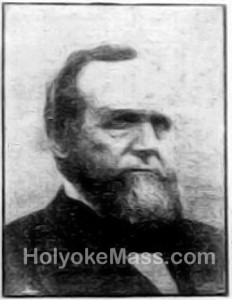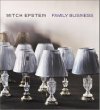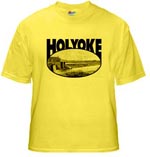by Laurel | March 11th, 2014
05 March 1905
The First Treasurer Still Living
The first treasurer of the Holyoke and Westfield railroad company is still living, hearty and hale and still engaged in active business. He is George W. Prentiss of the wire mills that bear his name, and his signature — fresh and jet black — is signed as treasurer of the Holyoke and Westfield stock certificated held by the town. There are two of these certificates — one for 1665 shares, dated June 18, 1871, and the other for 600 shared, dated October 14, 1873. The latter was the city’s investment on account of the extension of the spur track of the road around the city, as noted earlier. Bonds were issued by the city for $60,000, and with the proceeds the additional stock was bought by the city. The signature of J. C. Parsons as president and G. W. Prentiss as treasurer are upon both of these papers. Mr. Prentiss recalls the intense interest manifested the time that the road was built, and it was a general topic of discussion, particularly as to the wisdom of the city’s taking any of the shares of the stock, there being no opponents as to the desirability of having a competing line with the old Connecticut River railroad.
In fact, from what can be learned from the older inhabitants of Holyoke, the city’s investment did not cease to be a source of much discussion until the newer proposition, that of the city’s starting its present water supply, took up the attention of the citizens. So good a financier as the late C. W. Ranlet was strongly opposed to the city’s investing any money in the road, claiming that it would be a dead loss to the city, and that the city would never get its money back. The manufacturers and business ment looked at it as being a good investment indirectly, even if directly it should not be a money-making matter . They figured with a competing line they would not only get better treatment, but would get better rates, and in that way they would surely get an indirect benefit, in which the city would share. Both of these anticipations were realized, and had the stock never paid a dividend there is good reason for believing that the city made a good investment in buying the stock. Mr. Prentiss recalls among those interested in the venture in its early stages were J. C. Parson, Timothy Merrick, Judge W. B. C. Pearsons, the Newtons — John C., James H. and Daniel H. — and several others. After the completion of the “Canal” railroad, C. N. Yeamans of that company was anxious to get into Holyoke, and it is not unlikely that men interested in that road were instrumental in the Holyoke and Westfield extension. The fact that the leases were made out before the road was built shows surely that the Canal road was fully cognizant of what was going on.
City’s Stock Certificates Lost and Found
It will doubtless be news to many to learn that the city’s two stock certificates for its holdings of 2265 shares in the road were lost for many years. The last official receipt that could be found was when R. B. Johnson turned them over to C. W. Ranlet. The first official report of this loss as made in 1890 by City Treasurer D. L. Farr. Said Mr. Farr in his report “I would call attention to the fact that this city has no certificate of stock owned in the Holyoke and Westfield railroad company and I would recommend that the city council take steps to procure from the company a duplicate certificate, or certificate, which can undoubtedly be obtained in the usual manner.” No steps were taken, apparently, for the next report of the city treasurer contains no allusion to it. It is tradition that the matter of obtaining the missing certificates was not so easy a matter as assumed, and that it began to look as though the Legislature would have to be asked for aid. Happily, when City treasurer Farr was elected mayor, his successor, the present City Treasurer, Pierre Bonvouloir, found the missing certificates, after an exhaustive investigation, in an old envelope. there was nothing to indicate the contents on the envelope and Mr. Bonvouloir had a long and persistent hunt before he found them in a mass of other matter of small account. They are today guarded with jealous care, as befits the papers representing nearly a quarter-million dollars in value.
Adapted from The Springfield Republican.









